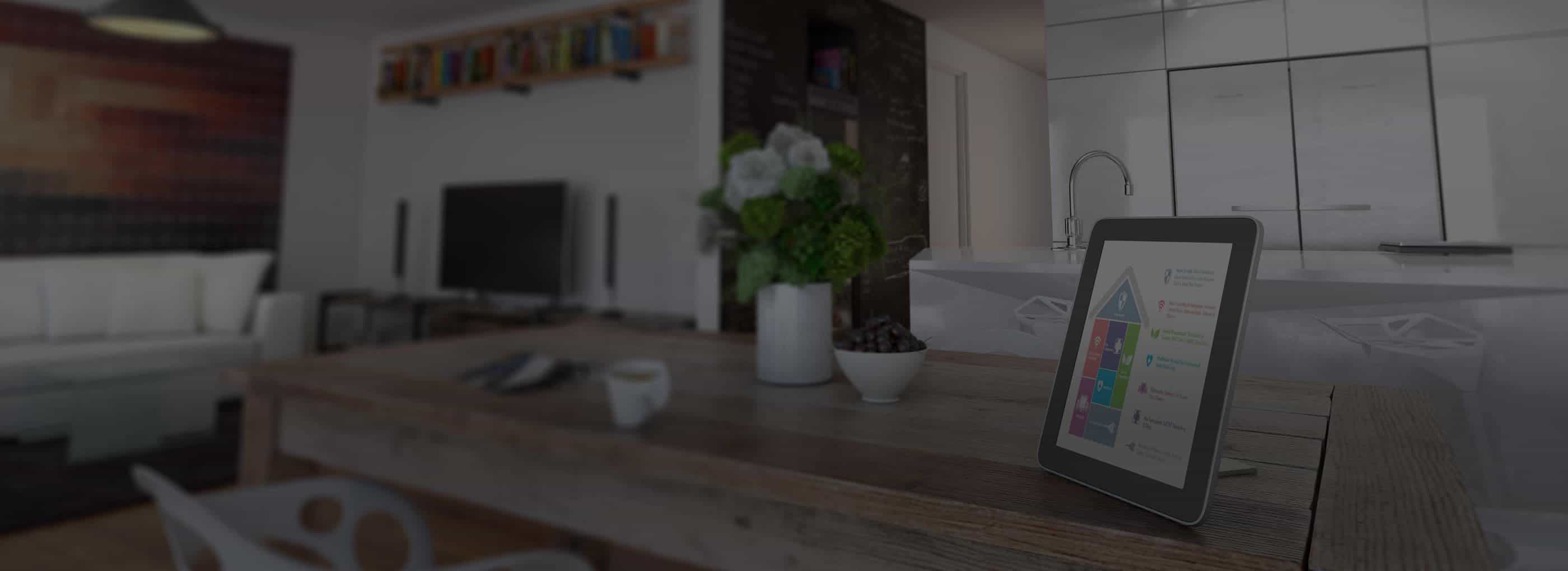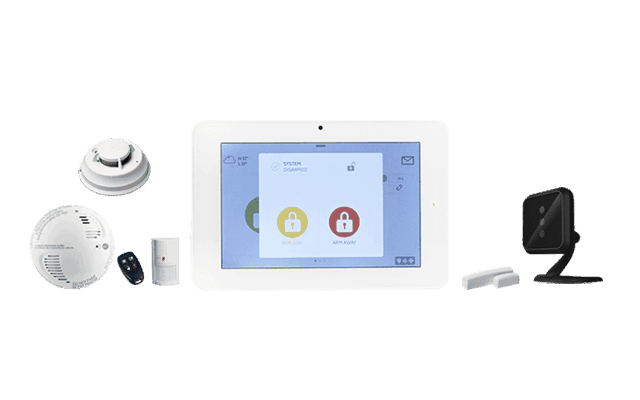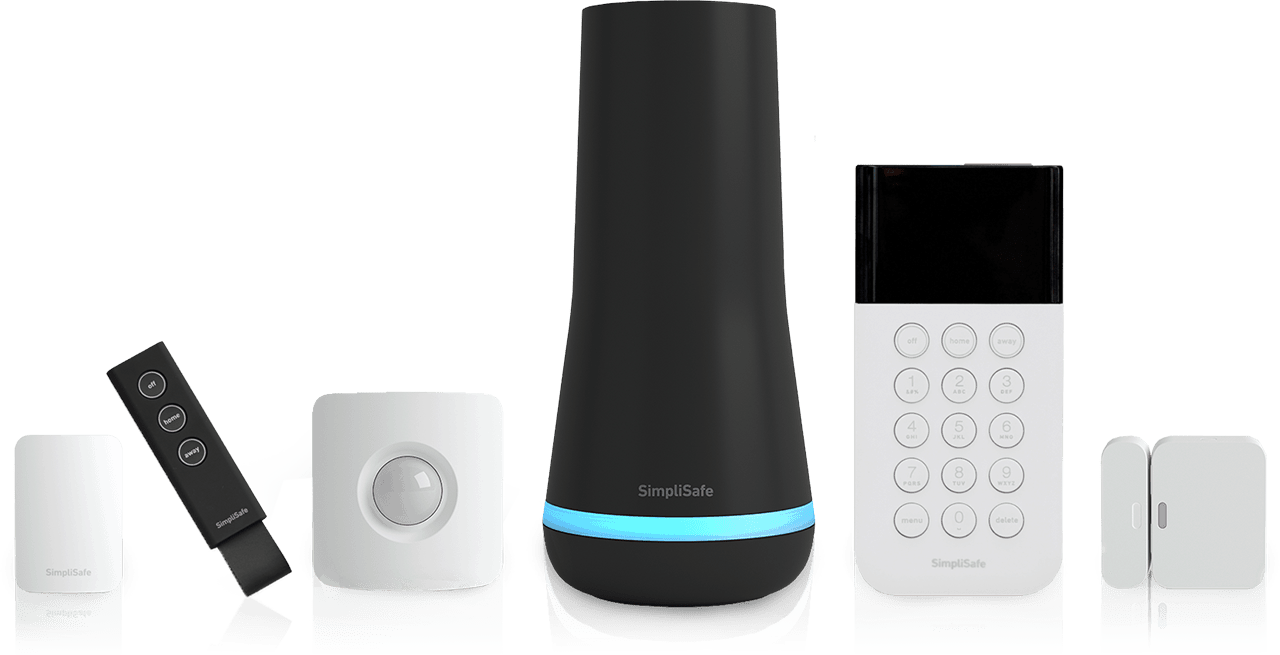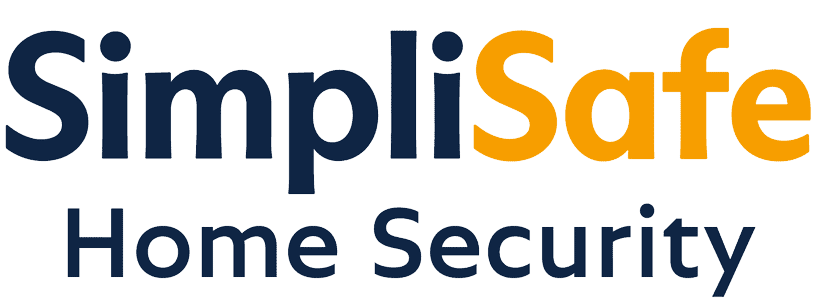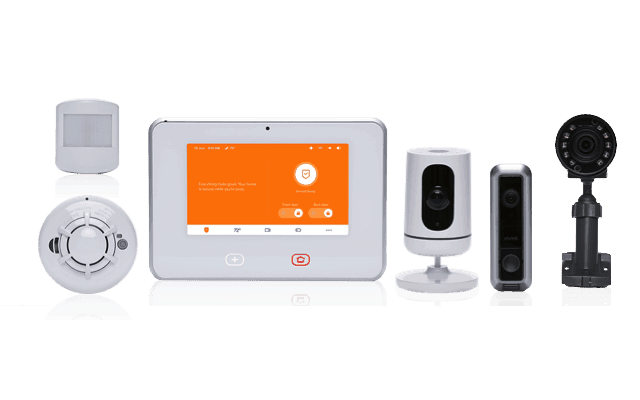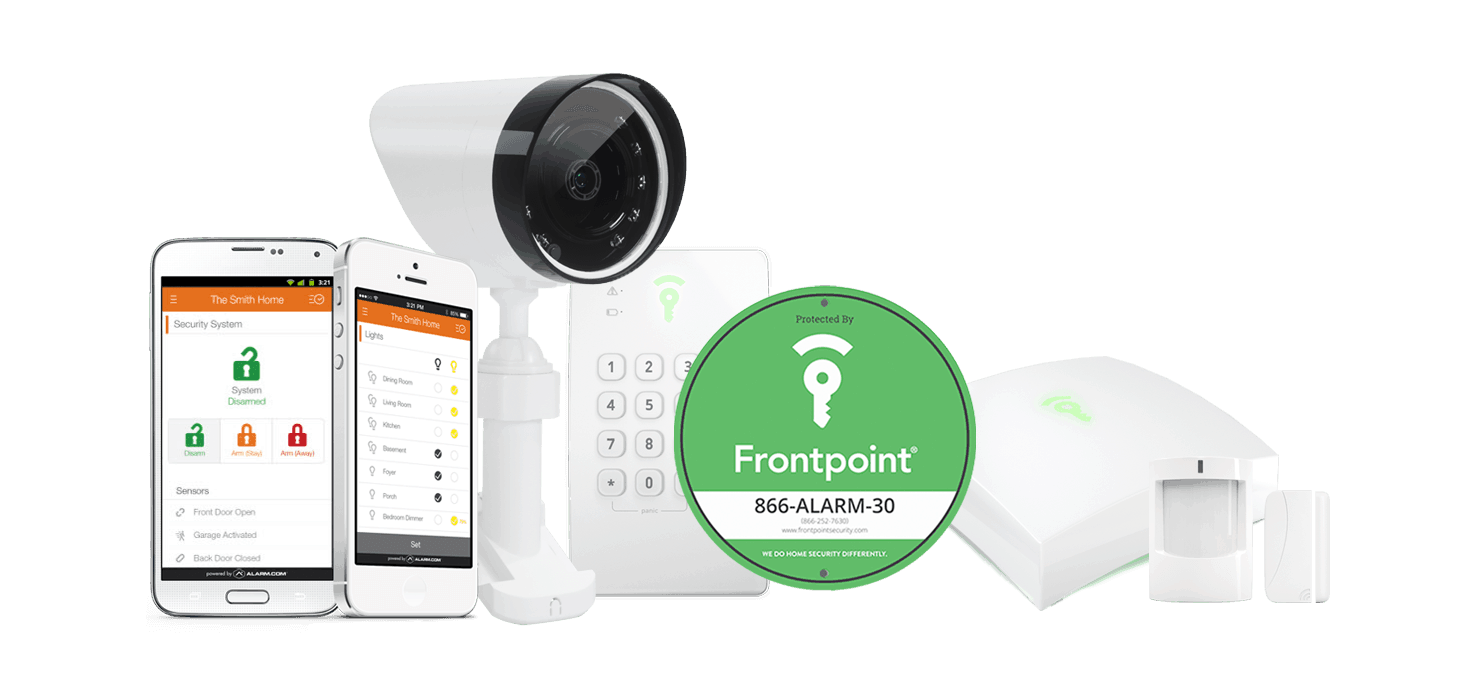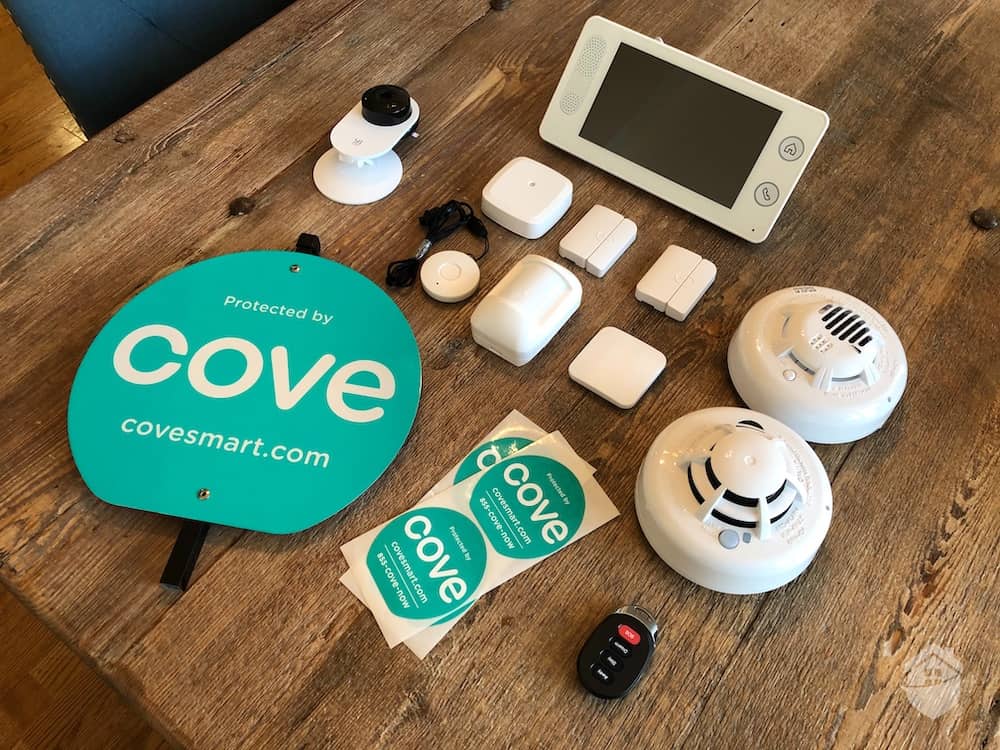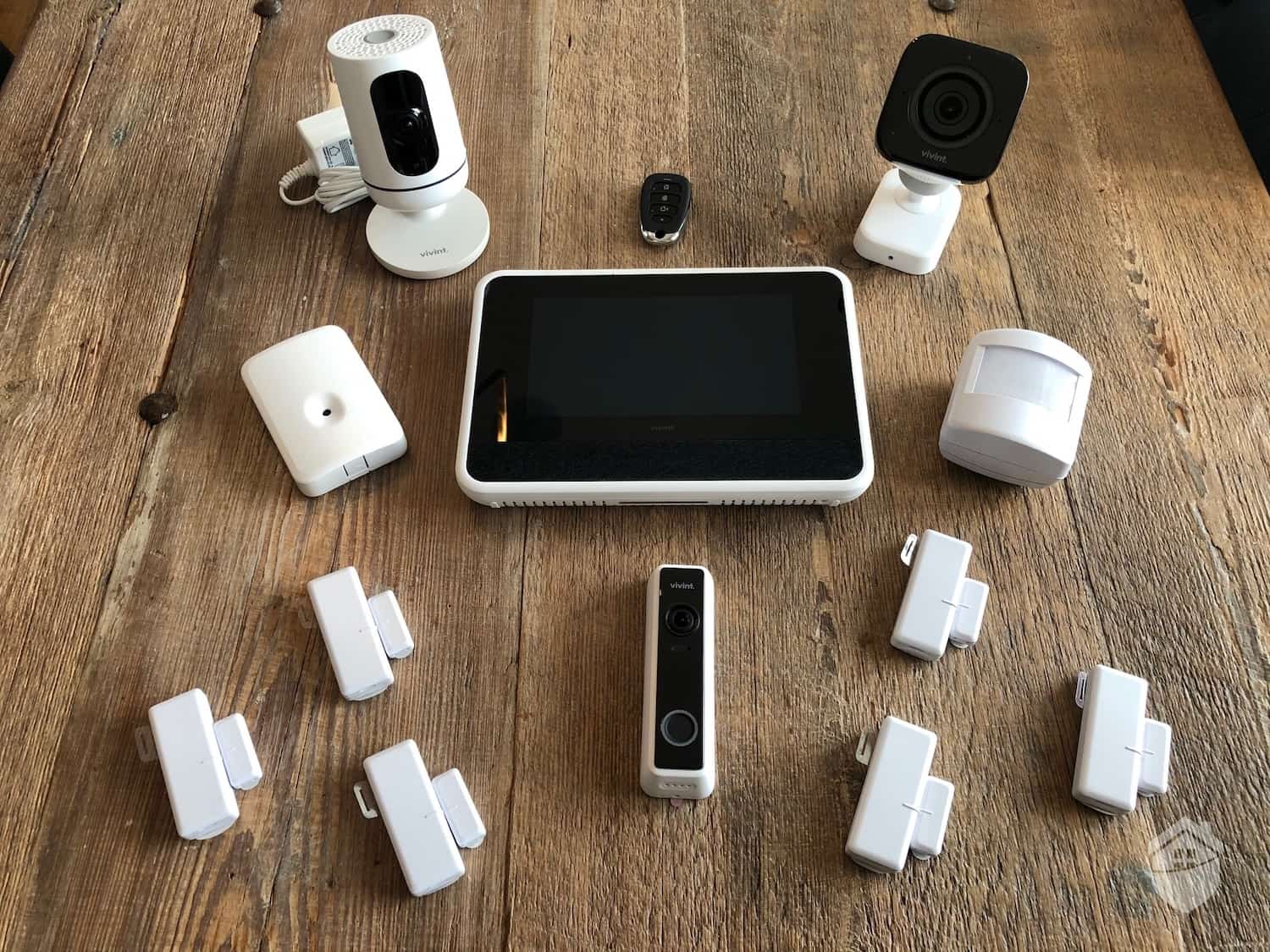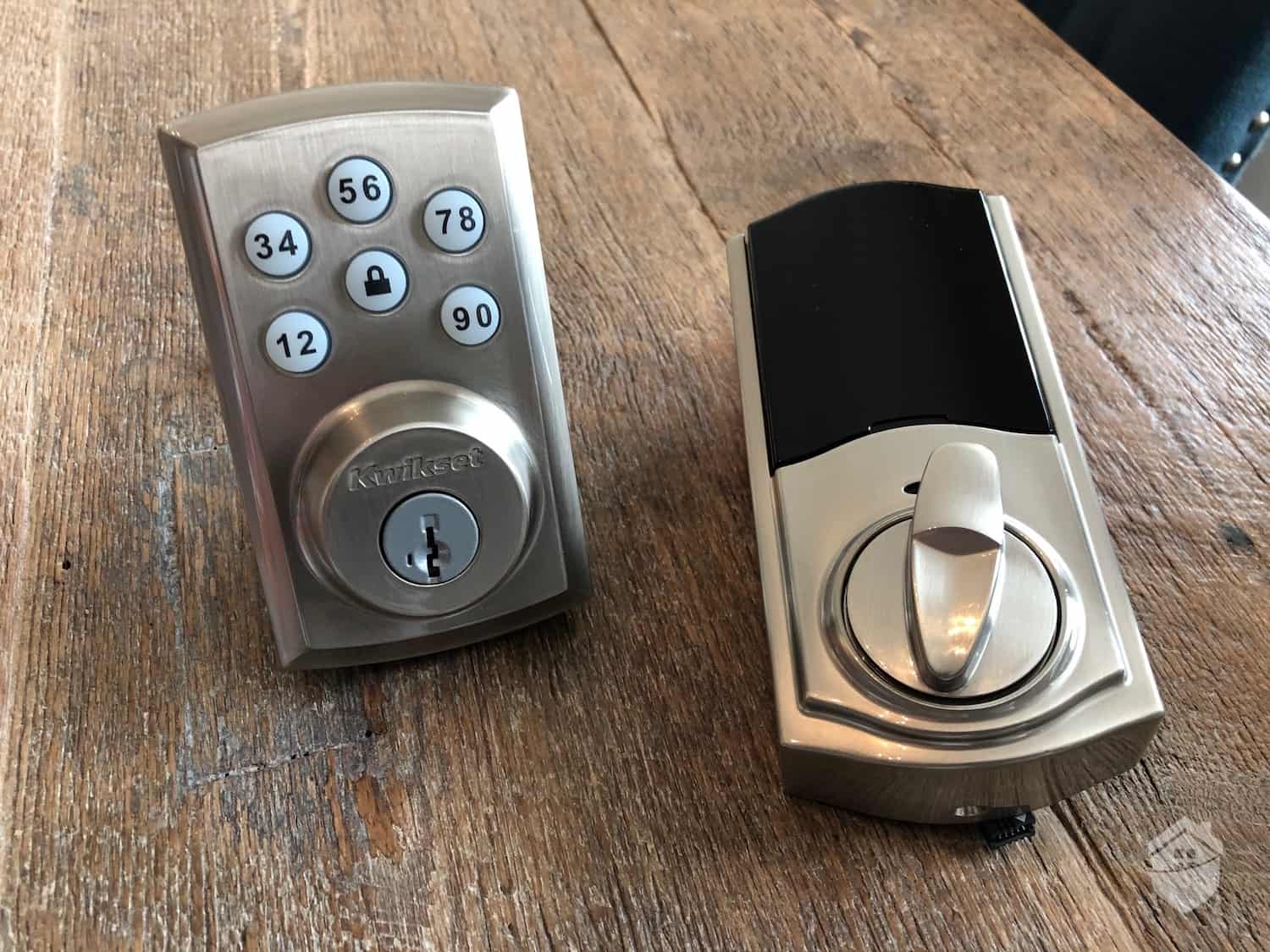Is Vivint Customizable?
When it comes to equipment customizability, there’s only one way to buy a Vivint security system – you have to talk to a sales representative. Let me warn you, some of them can be pushy, especially since Vivint offers a lot of upgrades. Vivint has smart home devices like smart locks and smart thermostats as well as premium but pricey security cameras. The key when buying a Vivint system is to be firm. Know what you want and assert that you’ll buy only what you need.
In my experience, the sales call starts with a discussion of the available packages. Once you’ve chosen one, you’ll get to customize it. You can’t take out equipment from the base packages, but you’re more than welcome to add more. After that, they’ll book your professional installation and contract signing schedule. One thing I really loved about Vivint was the installation; the technician was nothing but professional and he seemed to know where to best place my equipment for maximum coverage.
Vivint Equipment
If I haven’t made it clear already, Vivint offers a lot of equipment. It has the basic security and hazard sensors (e.g. smoke alarms), but it also has more niched options missing from SimpliSafe like garage door sensors. The real highlights though are the Vivint smart home devices and the premium security cameras.
For smart home equipment, Vivint has smart locks, smart thermostats, smart lights, smart plugs, and so on. But you actually don’t have to stick with Vivint equipment. The Smart Hub works with third-party devices, either through integrations or by pairing with them using Z-Wave. I already had a Nest Thermostat before I decided to buy a Vivint system, but I was able to pair it with Vivint.
For cameras, Vivint offers an outdoor camera, indoor camera, and doorbell camera. Here’s an overview of each Vivint camera:
| Camera |
Vivint Outdoor Camera |
Vivint Indoor Camera |
Vivint Doorbell Camera |
| Resolution |
1080p with 4K image sensor |
1080p |
1664x1664p |
| Field-of-view |
140-degrees |
150-degrees |
180-degrees |
| Night Vision |
Infrared or spotlight |
Infrared |
Infrared |
| Price |
$399 |
$249 |
$249 |
Each camera has a feature called Smart Deter. They use A.I. to detect potential intrusions, and following rules you’ve set, they use lights and sound to deter the intruders. I strongly recommend reading my Vivint security camera review to learn all about those nifty cameras.
Vivint Monitoring
Vivint packages all require professional monitoring, unlike SimpliSafe that lets you self-monitor your system. Not that that’s a bad thing; I recommend professional monitoring for new construction homes anyway. However, monitoring means there’s going to be a monthly fee, starting at around $39.99. Vivint is very reliable, though. I’ve never had any missed alarms in the three years I’ve had the system. In fact, it has one of the fastest response times because it sends text alerts usually in under 10 seconds.
$39.99 per month doesn’t sound so bad, but take note that that’s not the only monthly fee you’re going to pay. Vivint’s equipment is expensive – even more expensive than ADT – so unless you have a fat bank account, the best option is to finance the equipment purchase. I racked up a $1,200 bill so I’m currently paying a little over $20 per month on a five-year term. And take note: My system consists mostly of sensors. I only bought one outdoor camera ($399), one indoor camera ($249), and a smart lock ($179).
